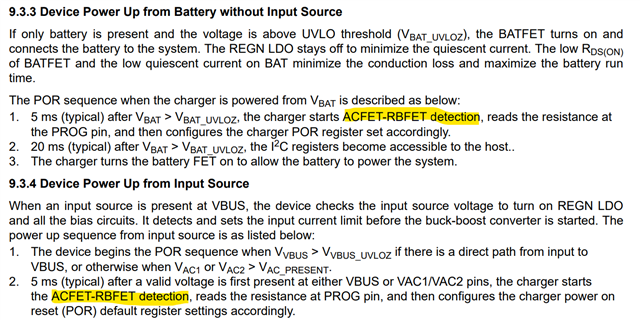Tool/software:
Dear Sirs and Madams,
We are mass-producing equipment that uses the BQ25798, and we are experiencing a problem with the power path circuit.
/* ACBR MOS FETs datasheet URL */
RQ3E180BNTB: Nch 30V 39A Middle Power MOSFET
When USB (5V) is connected to IN1 without applying voltage to IN2, nearly 3% of mass-produced units do not output 5V to VBUS.
When I checked each register of the BQ25798, I found that ACFET1-RBFET1 Status was set to '0' (Not Present).

Could you please tell us how ACRB1 determines that it is "placed"?
When does ACRB1 update "placed/NOT placed"?
Regarding the power path circuit, please let us know if there are any problems such as "IN1 gate resistance is large", "FET Qg is high", "VBUS capacitor capacitance is large", or "G-S capacitor capacitance is large".
Regards,
Masashi




